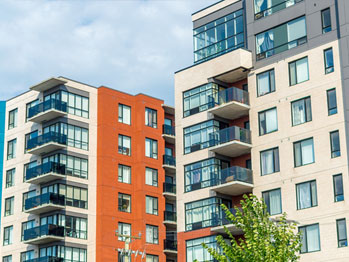
The challenge of planning ahead for a thriving city.
Australia is at a pivotal time in its growth and development, with many opportunities and possibilities ahead.
It’s estimated Australia will be home to 36 million people in the next 30 years, with most of this growth (about 75 percent) centred in our largest capital cities—Sydney, Melbourne, Brisbane and Perth, predicts Infrastructure Australia, the nation’s independent infrastructure advisor. In Sydney alone, this will mean an extra 2.7 million people and around 2.5 million additional daily journeys on Sydney’s road network.
In a presentation earlier this year on ‘Future Cities’, Infrastructure Australia CEO Philip Davies said Australia’s population growth was one of the fastest in the OECD (Organisation for Economic Co-operation and Development), easily outstripping the United Kingdom, Canada and the United States.
“The speed and magnitude of the coming change means we now need a smarter and far more sophisticated approach to the way we plan our cities,” he said.
And it raises some big choices. “Do we choose a future where we live on a quarter-acre block but commute hours to work? Should we embrace high-quality high-density living close to public transport and other amenities, or decentralise our growth centres and locate jobs closer to where people live?” Davies questioned.
The type of city we work towards will impact things such as journeys to work, road congestion, housing affordability, public transport, schools, healthcare and public space.
Davies says that if we fail to anticipate and respond to the upcoming wave of growth, “the likely results will be declining economic productivity, increasing environmental pressures and a marked reduction in our quality of life”.
Dr Liz Allen, a demographer at the Centre for Social Research and Methods at The Australian National University also raised concerns about the risk of inaction.
“Infrastructure, population (especially ageing), environment, housing, and socioeconomic inequality are the most crucial factors Australian governments face over the coming decade. Governments at all levels in Australia must take action now to ensure Australia’s enduring wellbeing.”
Steps for state governments
Launching its Future Cities paper, Infrastructure Australia put out a suite of recommendations for all levels of government.
Mass Transport: Australian governments need to increase investment in timetable-free mass passenger transport to reduce congestion and increase access between where people live and work.
Employment Centres: Well-planned employment centres connected by public transport will enhance the economic performance of our cities.
Increasing Liveability: State and territory governments should prioritise investment in new parks and make better use of existing open spaces to maintain liveability for local communities.
Metro-level Governance: This might take a different shape for each city, but it should prioritise coordinating how we grow while giving the community a voice in the process.
While there are many options on the table, the emphasis is on having a plan rather than racing ahead with piecemeal planning.
The report shows that well-planned cities, where the location of jobs, homes and their supporting infrastructure networks are coordinated to maximise accessibility and liveability will deliver the best outcomes for communities.











